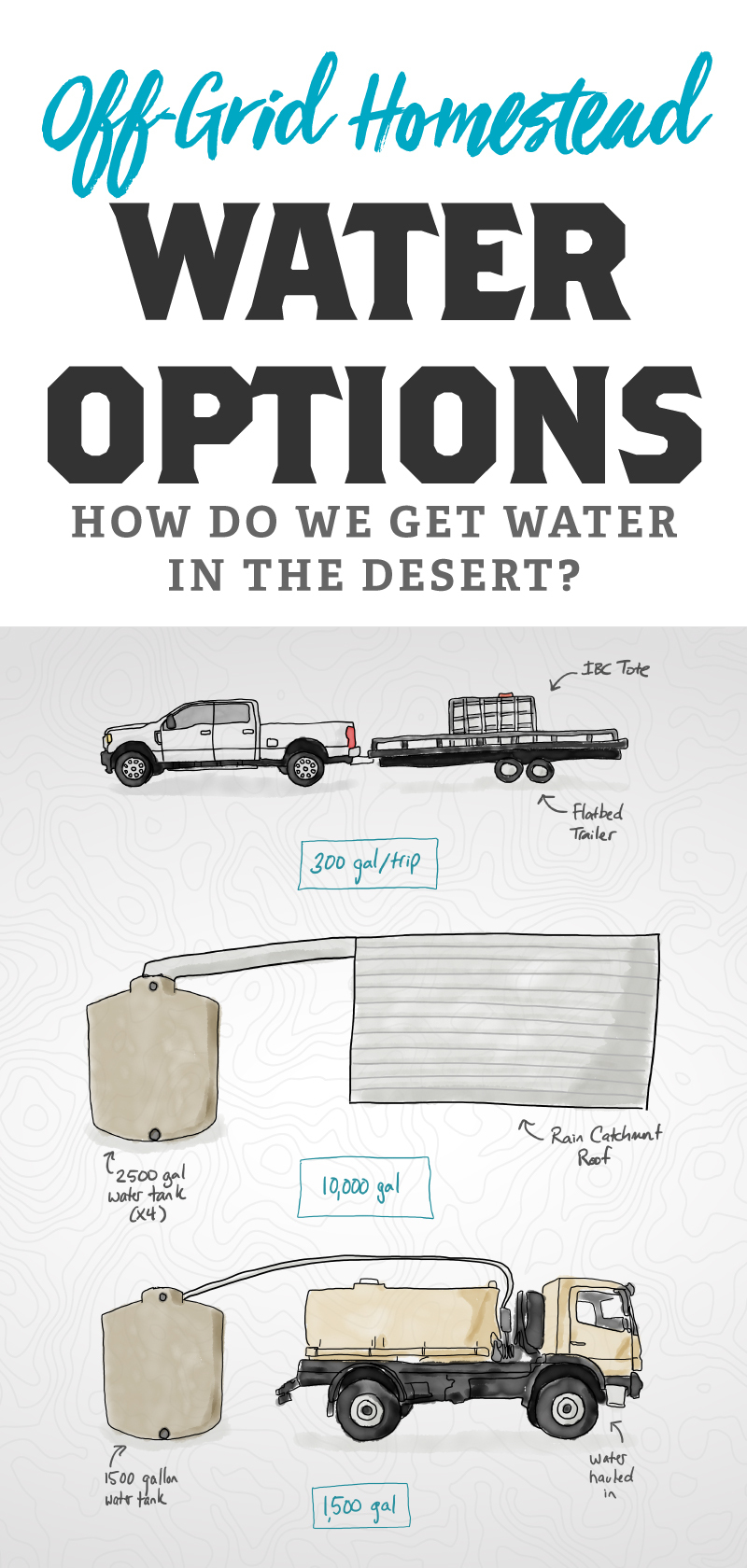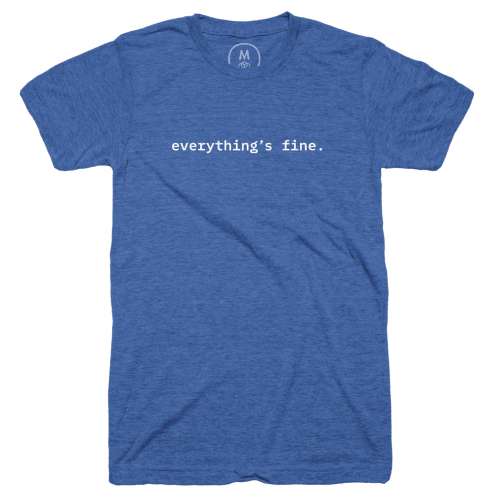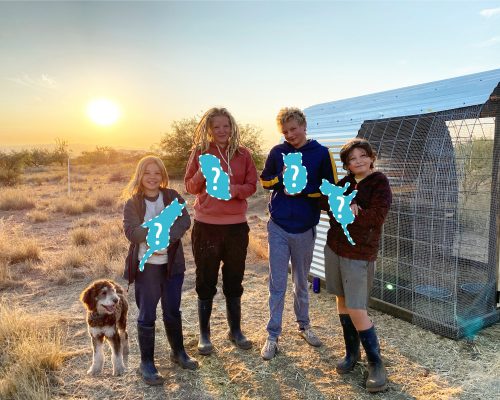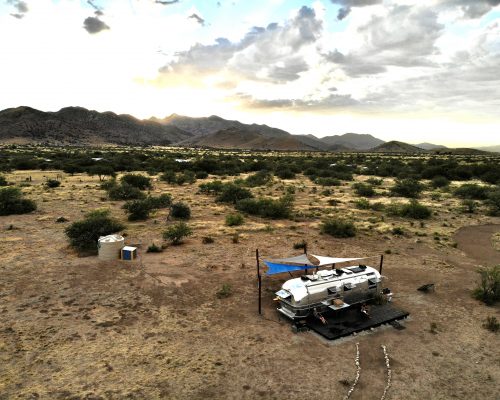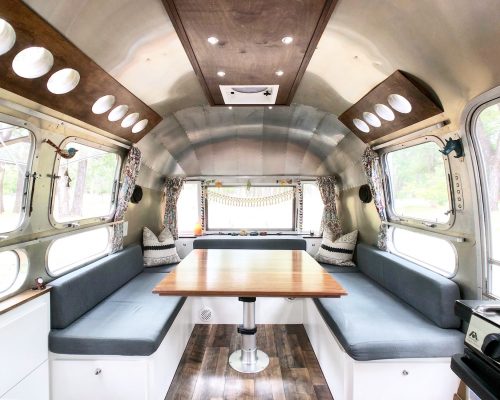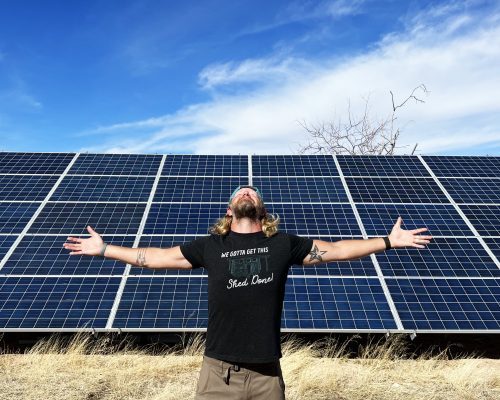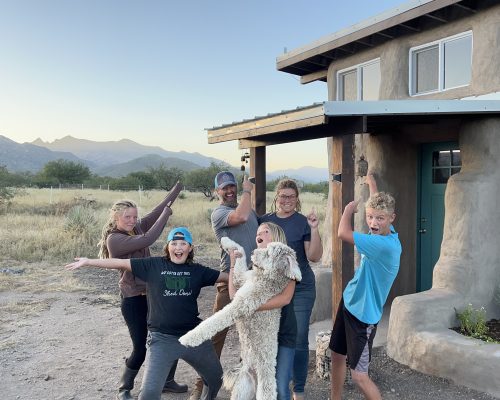Building an Off-Grid Homestead: Water Options
Typically, when you think of a homestead you picture grassy fields, lots of trees and fertile ground. Ours will look quite a bit different out in the high desert of southeastern Arizona.
We have so many big plans for this piece of land, but the big question right now is WHAT DO WE DO FIRST?
Let’s just pretend for a moment that the property has been re-zoned and it’s finally ours. Now what?
- Should we worry about water first?
- Do we install fencing first to keep out the free range cattle?
- What about a storage shed for tools and equipment we’ll need to work on the property?
- Will we need more solar power?
We have been boondocking for so long it’s no problem for us to pull up to the land and park our trailer. However, there are a few things that will make this a bit more challenging. Let’s start with our water options.
Drill a Well
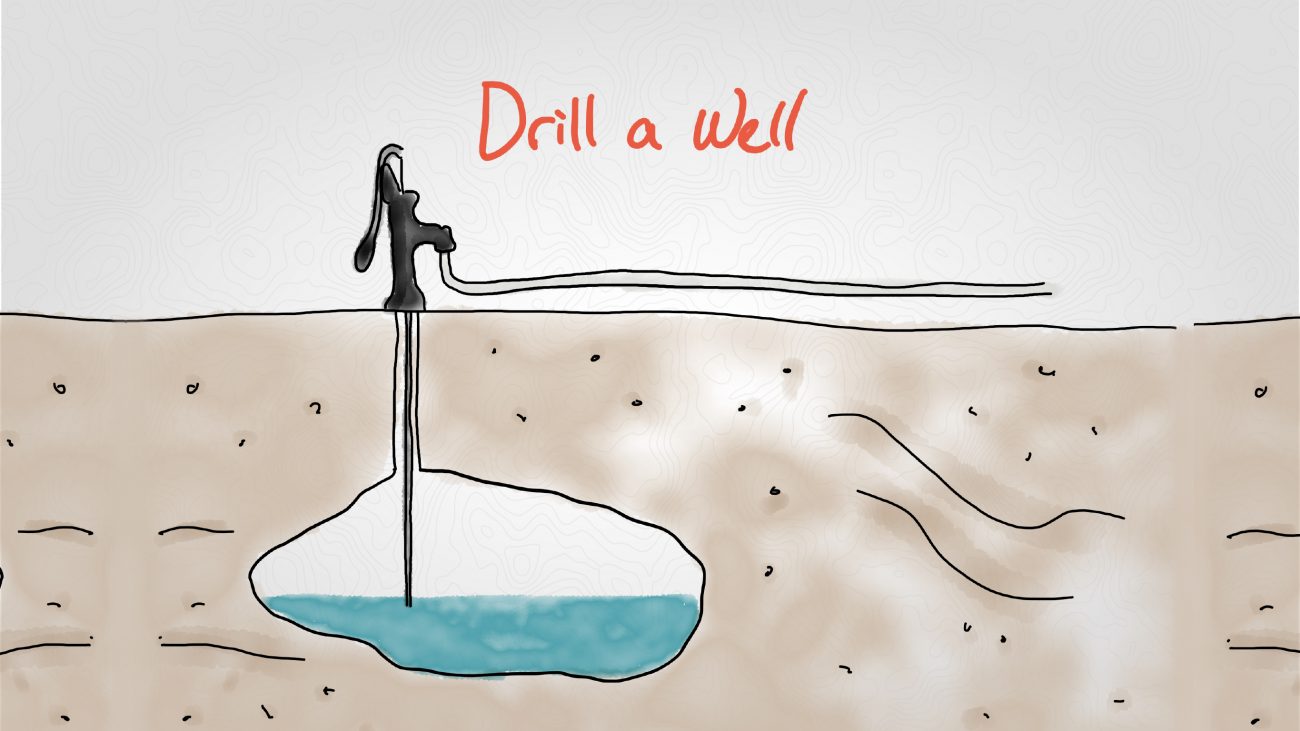
Now before we get started let's talk about why drilling a well is not an option for us in our area. Most people tend to drill for their water on a 'normal' homestead - however, there is a lot of agriculture nearby the property that is drying up everyone's wells. You could easily spend $5-$30K on drilling, but there’s no guarantee that you won’t need to re-drill in a few years. For this reason, a well was never a really option for us, but let's talk about the options we do have.
1. Haul Water in Ourselves
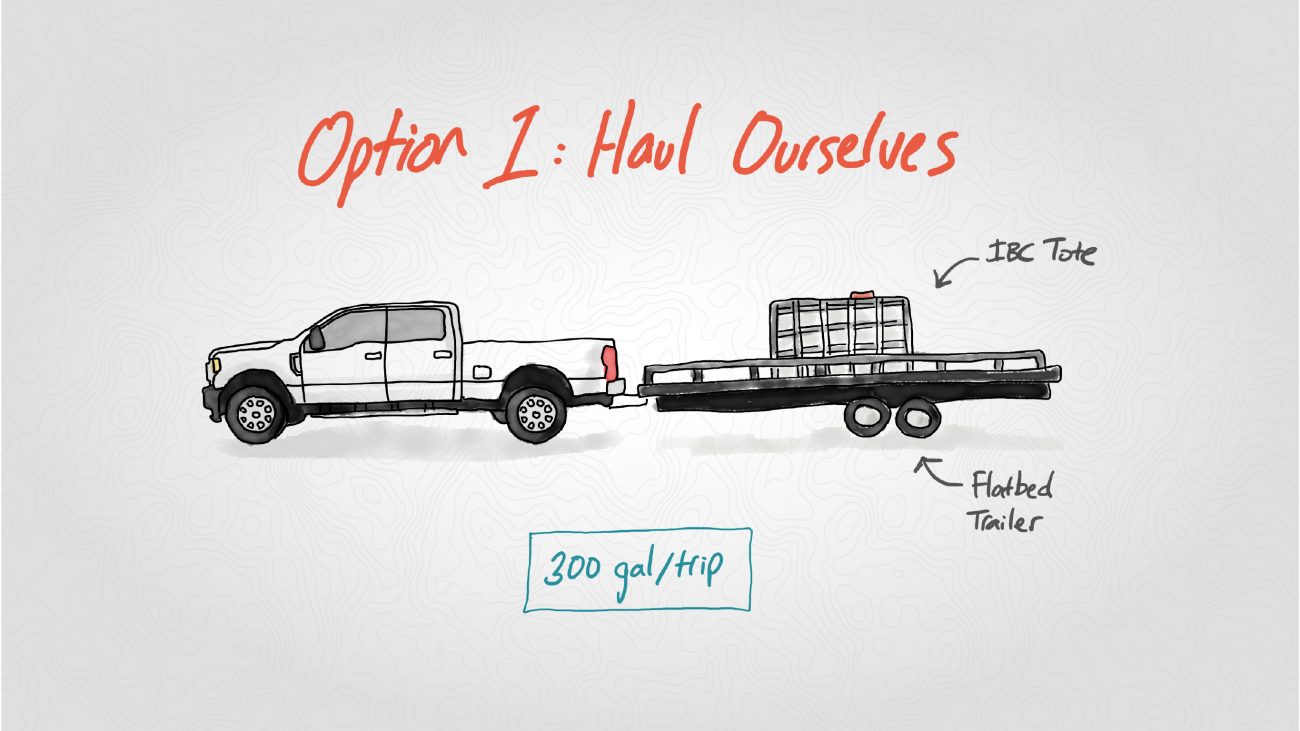
This is what we do when we're boondocking, but on a much smaller scale. This seemed like the most logical solution, but with being 40 minutes from town, we're looking at other options.
While the cost upfront cost is reasonable (under $2,000), it doesn't make sense during this time of trying to avoid crowds and practicing social distancing. Plus we'd be spending way too much valuable time hauling water each week when we could be working.
2. Rainwater Catchment
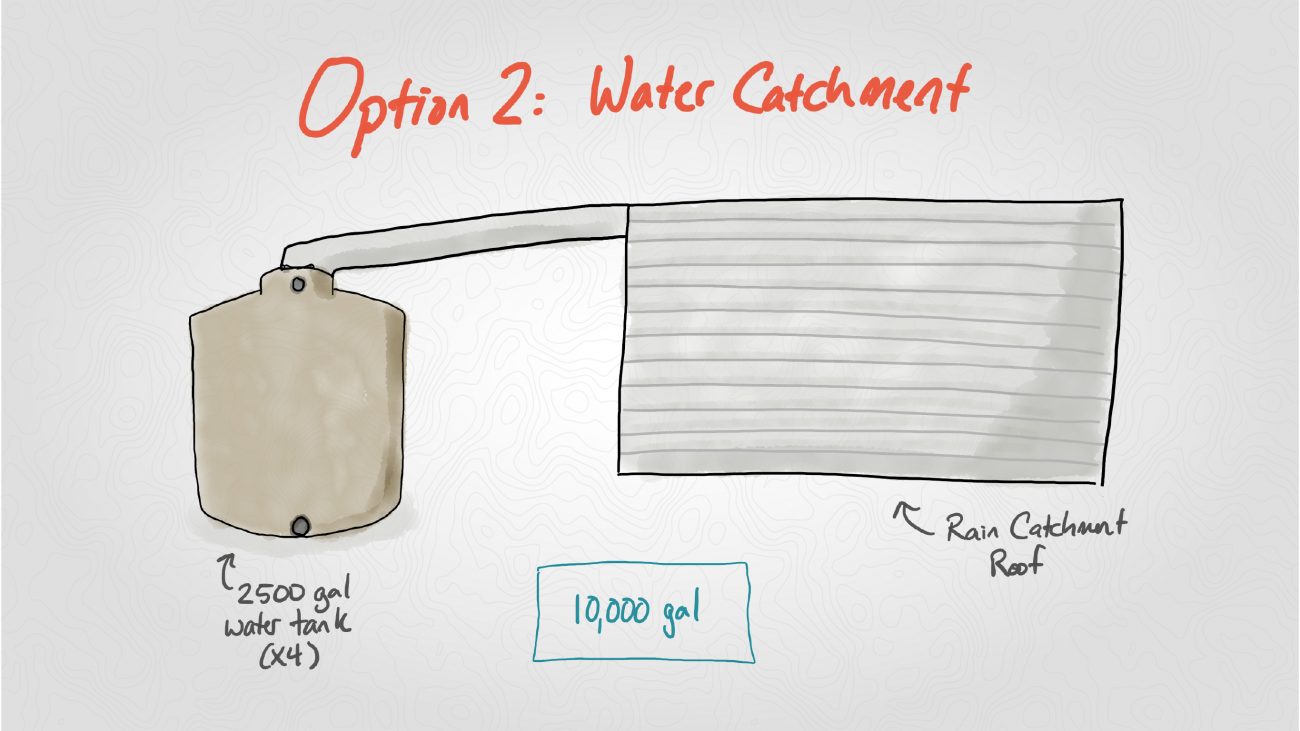
Our ultimate goal is rainwater catchment. I’ve been sold on this option for so long, and though it’s a much pricier option, over time it would be much more self-sustaining for us. Now I know what you’re thinking. Arizona? Rainwater? I know! Hear me out.
With an average rainfall of 12 inches a year, and most of that falling in just 2.5 months out of the year, we’d need a lot of water catchment surface as well as lots of storage. What I would love to do is build a rainwater roof similar to Derek’s, but we’d need several 2600 gallon totes to get us through a year of our water needs. With all the other projects we need to do up front, that's going to have to wait a bit longer before we make this huge investment.
According to my calculations, I could build the roof for around $2,000, but the totes are whats’ so expensive. For 4 storage tanks, it’s around $7600 and that would give us 10,400 gallons of water for the year. Now…this is on the low side of our water needs, but I think we could make this work.
This estimate of course doesn’t include all the PVC to run the water where we need it, or connect the tanks, or the pump to get the water from one tank to our Airstream. It’s definitely a pricy option, but one that we could do in stages if we needed to. We could build a smaller roof with the ability to add on to it eventually, and we could start with only two tanks instead of four and just connect them later. It’s just a lot more complicated to do it that way.
While our end goal is rain water catchment - at this time - we're going to have to find a cheaper option.
3. Water Delivery
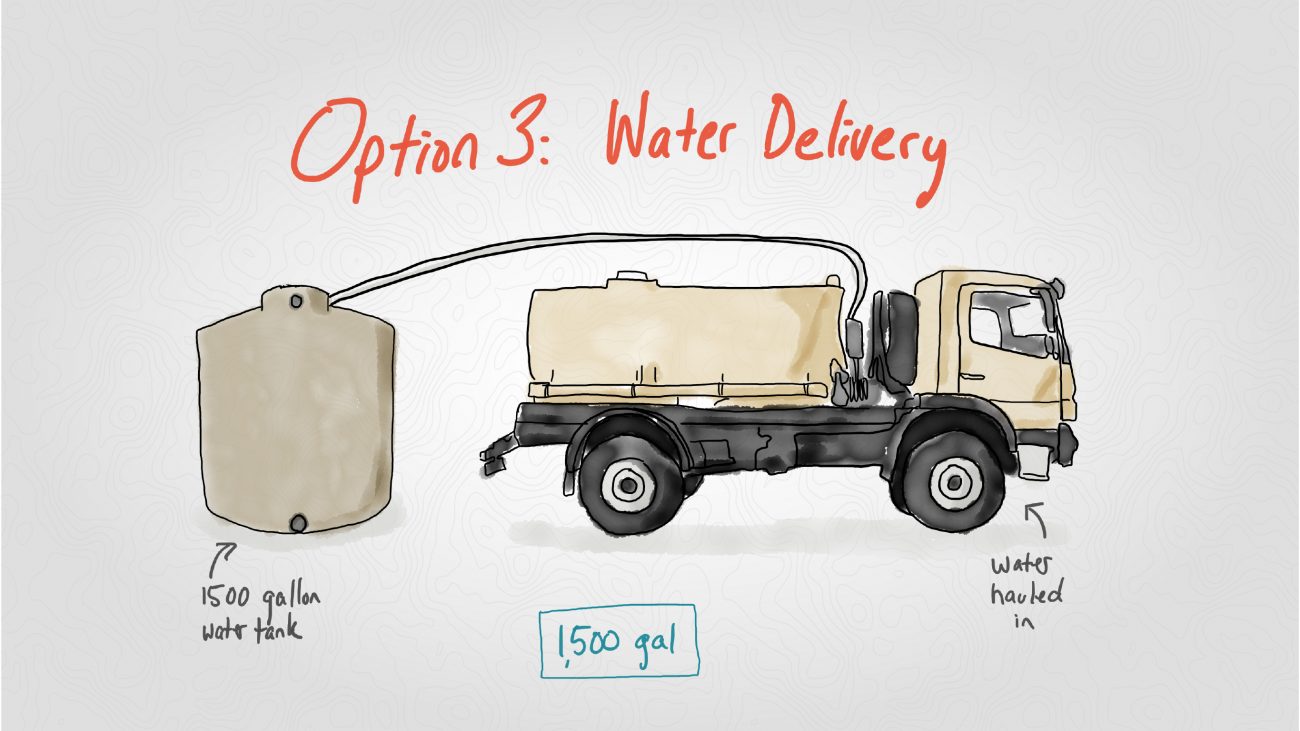
The last option is to buy a smaller 1500 gallon water storage tank and have water delivered to us. Just this week we found a local who will deliver water to us 1500 gallons at a time. Score!
With an upfront cost of about $1,300, and only $65/delivery, this option would take us 12 years to add up to what we would need to invest in our rain water catchment system.
This seems like the most logical solution for what we need to get started. It's a great in-between solution that will allow us to store water for month(s) at a time with a relatively low investment.
Update: we found an even better solution! See below.
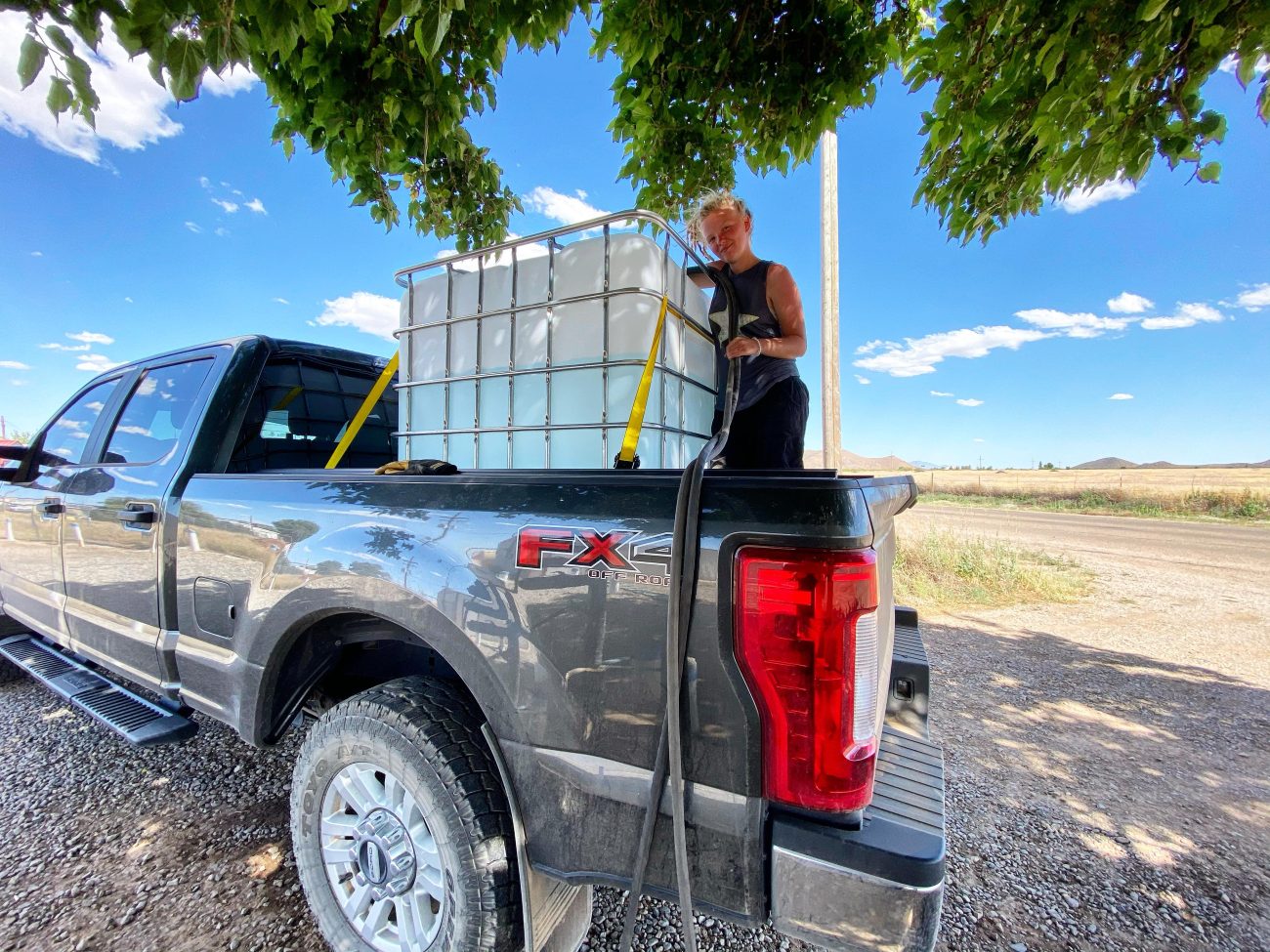
Haul Ourselves & Store
After we wrote this article, we realized there was an even better way. Turns out there is a well share about 10 minutes from our land. For about $40 a month we can put a 330 gallon IBC Tote in the bed of our truck, fill it ourselves, bring it back, and then transfer it to a larger 2600 gallon storage tank using a transfer pump.
This means we don't need a flat bed trailer, and can go grab some water whenever we need to without worrying about scheduling a delivery.
We also built a solar pump house to create a pressurized water system that runs straight into the city inlet on our Airstream so we don't have to transfer the water to our fresh tank each day.
All in all this was still a significant investment - the IBC Tote was about $150 used, the 2600 gallon tank was nearly $2,000, and the pump house cost more than we care to admit (we totally failed on the first attempt). But having constant water for weeks at a time without having to worry about making runs to the well share was worth it.
We have so many other things to do out here, transferring water every day wasn't how we needed to be spending out time.
--
So as you can see, there are so many options to choose from, and this is just the water! We still have a whole slew of other things to figure out along the way. We’re excited about learning so many new things and sharing what we learn with all of you!
We’ve been able to find a few other people out here who are doing similar projects so it’s been good to learn from them. We’ll be documenting the whole process in order to help others who are wanting to do something similar in a desert climate.
Thank you for following along on this crazy journey of ours. We're excited to share this new adventure with you.
And of course, if you have another idea for our water, let us know in the comments!
Apparel
Grab a fun, comfy t-shirt & help support our family.
comments powered by Disqus
